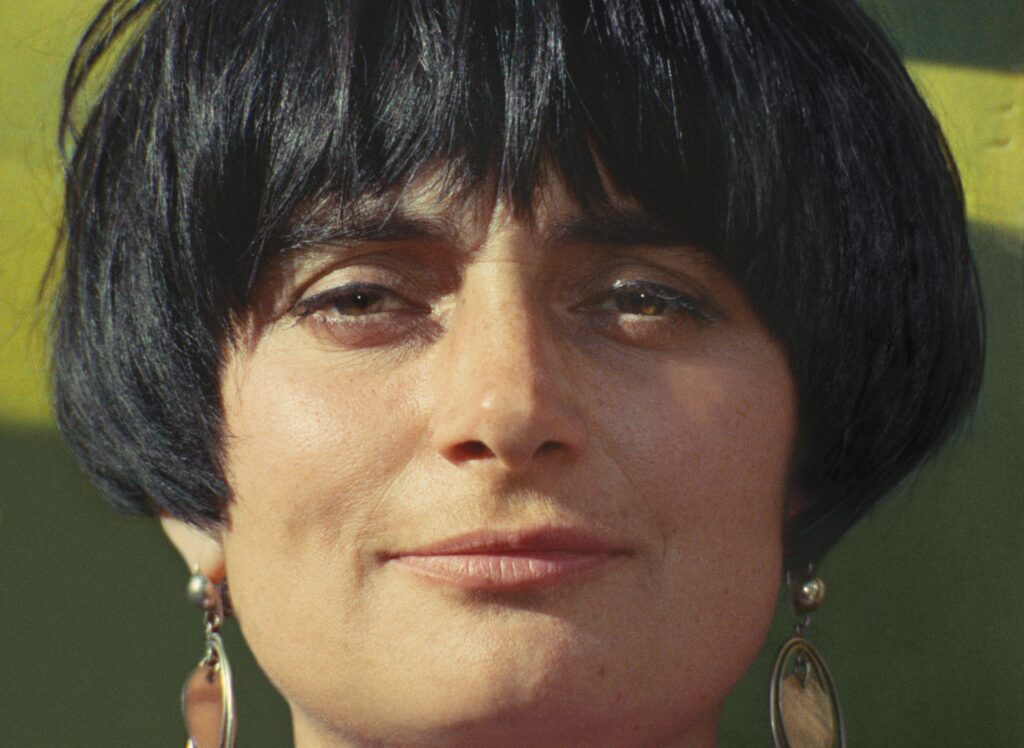Exhibitions
CCCB presents the retrospective 'Agnès Varda. Photograph, film, recycle'
The exhibition traces the life, work and fascinating stories of a free, modern creator committed to her political and social environment

The Contemporary Culture Center of Barcelona (CCCB) records the Agnès Varda exhibition. Photograph, film, recycle the extensive multidisciplinary work of the photographer, artist, filmmaker and pioneer of the Nouvelle Vague, and discover to the public a woman committed and closely linked to canonical art.
The exhibition is an extended adaptation of the exhibition Viva Varda!, conceived and produced by the Cinémathèque française in Paris in collaboration with Ciné-Tamaris and the contribution of Rosalie Varda and Mathieu Demy, and which is curated by Florence Tissot, with the artistic direction of Agnès Varda's daughter, Rosalie Varda, and the local advice of film critic Imma Merino.
Forerunner of the Nouvelle Vague cinematographic movement, Agnès Varda (Brussels, 1928 - Paris, 2019) was one of the few female directors of her generation able to consolidate a long career, with more than forty films , between feature films and shorts and between fiction and documentary, in analogue and digital cinema, in which he broke norms and clichés and always wanted to renew himself.
 Agnès Varda al seu estudi de la Rue Daguerre, 1955. Succession Agnès Varda
Agnès Varda al seu estudi de la Rue Daguerre, 1955. Succession Agnès Varda
The exhibition, which will be on display at the CCCB until December 8, celebrates the career and talent of an artist who experimented with multiple media and artistic languages. In addition to the materials from the original exhibition, it includes four installations created by Agnès Varda, projection rooms to see in their entirety fundamental short films from her filmography, an unpublished photographic report of her trip to Catalonia in 1955, as well as materials that show the relationship between Catalan artists and the work of the filmmaker.
Specifically, it reveals how some Catalan artists were references for the creator (Dalí, Tàpies, Barceló) and how creators from the country have been influenced by her work, including a piece by filmmaker Mercedes Álvarez specially created for the exhibition In this sense, the exhibition includes, among others, works by Joan Fontcuberta, Miquel Barceló, Antoni Tàpies, Isa Feu, Isaki Lacuesta and Niki de Saint Phalle.
The original and bold creator experimented with multiple media and art languages. That's why the exhibition vindicates this temperament and you can see all kinds of materials from the original exhibition, four installations created by Agnès Varda and projection rooms to see fundamental short films from her filmography in their entirety.
The exhibition presents four of Varda's installations for the first time in Catalonia, in addition to a selection of essential short films from his filmography, which can be viewed in projection rooms within the exhibition space.
On the tour, visitors can delve into the fascinating life of Agnès Varda, marked by her background career to make films with few resources and recognition and by the travels, children, friendships and various relationships she maintained. Varda was a protagonist of the social and political effervescence of her time: feminism, the hippie movement or the struggle of the Black Panthers. And he related both to famous artists and actors and to anonymous and marginalized people, whom he wanted to represent and dignify in his films.
To vindicate Agnès Varda's curiosity and playful nature, the Varda Laboratory has been created, a space to delve into the author's imagination or discover her fascination with cats, mirrors and beaches. The artistic director of the exhibition and daughter of Agnès Varda, Rosalie Varda, has celebrated that with the most important exhibition made by her mother you can see the legacy based on "freedom", "curiosity" and "love for others ". Varda has opined that it is a very rich legacy that has reached many generations and that has embraced issues such as feminism.
 Agnès Varda. Fotografia del set de Cléo de 5 a 7, con Corinne Marchand, 1961. Ciné-Tamaris
Agnès Varda. Fotografia del set de Cléo de 5 a 7, con Corinne Marchand, 1961. Ciné-Tamaris
For Varda, the tour of the exhibition allows you to discover the three great facets of the artist: her beginnings as a photographer, when she was a filmmaker and when she experimented as a plastic artist. He also said that the work goes through the entire 20th century and the technological transformations of the moment.
Before going through the different facets of Varda's life and work, the exhibition begins with a journey into the Varda universe through his installation Bord de mer (2009) and an audiovisual piece created especially for the occasion by filmmaker Mercedes Álvarez.
The first section presents a selection of Varda's photographs, some of which have never been seen before, including portraits of friends and artists and self-portraits, as well as the unpublished photographic series of his trip to Catalonia in 1955, in which he portrayed Dalí . Also included is his installation 'Ulysse' (2012).
Later, to claim his own style, Varda's short films L'Ópera-Mouffe and 7 P., cuis., s. can be seen in their entirety. de b... (à saisir), and learn about key films in his filmography, such as La Pointe Courte, Cléo de 5 à 7 or Sans toit ni loi. Also included is the work of the Catalan cartoonist Isa Feu, influenced by the artist.
To address Varda's youth and Greek origins, another section of the exhibition exposes her relationship with the theatre, the Nouvelle Vague, Jacques Demy, actors and actresses, children, the world of art and cats
The exhibition is completed with an area showing Varda's travels to Mao Tse-tung's China and Fidel Castro's Cuba, to Los Angeles of the countercultural explosion and urban murals, and her travels through France portraying scroungers and espigoladores or with the photographer and urban artist JR. Finally, there is a space where you can see the more feminist, free and joyful Verda with installations such as Les Veuves de Noirmoutier (2005).








